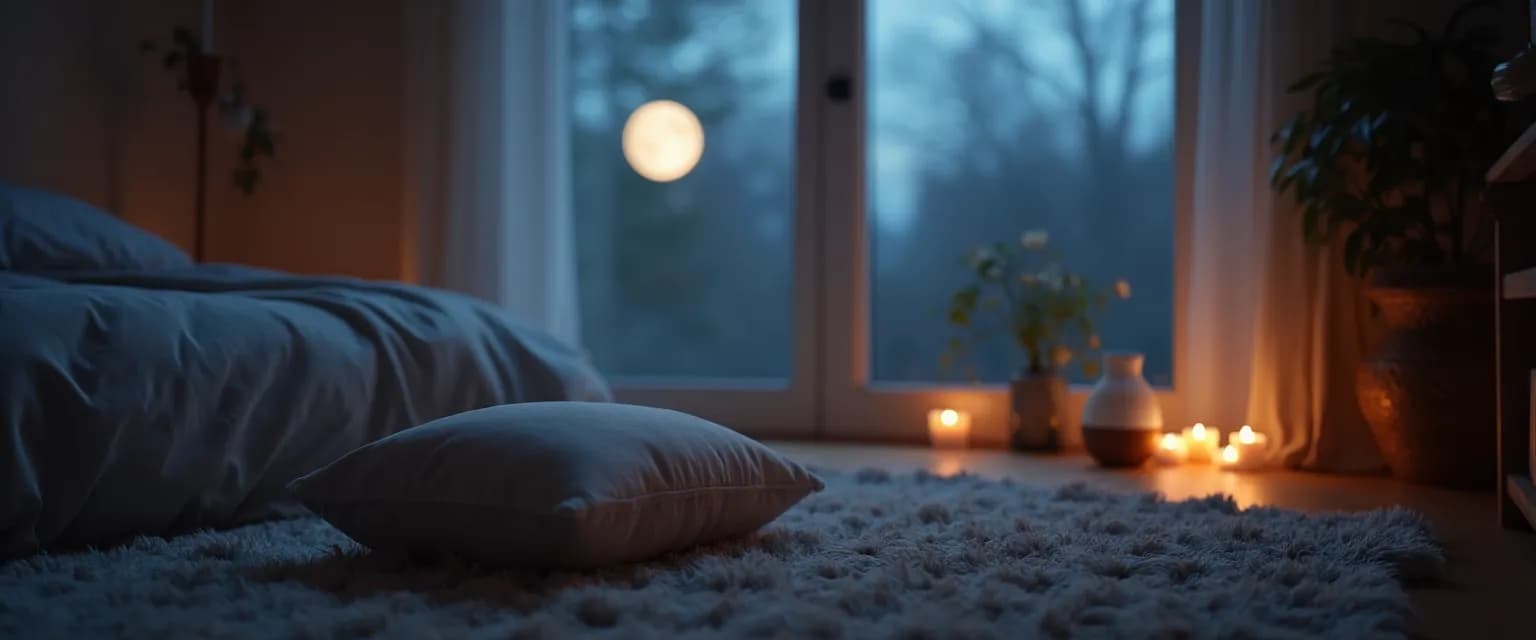5-Minute Meditation and Sleep Ritual: Your Path to Better Rest Tonight
Ever found yourself exhausted but unable to sleep? Racing thoughts keeping you awake when all you want is to drift off? You're not alone. The frustration of lying wide-eyed in bed despite bone-deep tiredness is all too common. But there's good news: the connection between meditation and sleep offers a practical solution that doesn't require hours of your time or years of practice.
Meditation and sleep go hand in hand, with research showing that even brief meditation sessions can significantly improve sleep quality. Unlike traditional sleep advice that often feels like a laundry list of don'ts (don't use screens, don't drink caffeine, don't stress), a quick meditation ritual gives you something positive and proactive to do. The best part? You don't need any previous meditation experience to benefit from this powerful strategy for managing insomnia.
Let's explore how a simple 10-minute nighttime ritual can transform your sleep experience, helping you fall asleep faster and enjoy deeper, more restorative rest.
The Science Behind Meditation and Sleep Connection
The magic of meditation and sleep improvement lies in how meditation affects your nervous system. When you meditate, you activate your parasympathetic nervous system—your body's "rest and digest" mode—which is the exact state you need for quality sleep.
Research published in JAMA Internal Medicine found that mindfulness meditation significantly improved sleep quality in adults with moderate sleep disturbances. How? Meditation reduces cortisol (your stress hormone) levels that typically interfere with sleep onset. This hormonal regulation is why even a brief meditation session before bed can be more effective than spending 30+ minutes in a screen-free wind-down.
Cognitively, meditation trains your brain to recognize thought patterns without getting caught in them. This skill is particularly valuable at bedtime when racing thoughts tend to appear. Your brain learns to note these thoughts without spiraling into worry cycles about not falling asleep—a common factor affecting sleep quality.
The best part? These benefits begin with just 5-10 minutes of practice. Your brain and body respond to the intention and attention of meditation, not necessarily the duration.
Your 10-Minute Meditation and Sleep Ritual Blueprint
Creating an effective meditation and sleep ritual starts with setting up your environment. Keep your bedroom cool (65-68°F is ideal), dark, and quiet. Consider using a white noise machine if environmental sounds disturb you. Your bed should be associated with sleep, so sit on the floor or in a comfortable chair for your meditation.
Try these three simple breathing techniques specifically designed for pre-sleep meditation:
- 4-7-8 Breathing: Inhale for 4 counts, hold for 7, exhale for 8. Repeat 4 times.
- Extended Exhale: Breathe in normally, then exhale for twice as long as you inhaled. Continue for 2 minutes.
- Alternate Nostril Breathing: Close your right nostril with your thumb, inhale through the left. Switch sides and exhale through the right. Continue alternating for 3 minutes.
For a complete practice, follow your breathing with a modified body scan: Starting at your toes, mentally relax each body part as you move upward. The key difference in this sleep-focused version is to avoid checking in with sensations (which can be activating) and instead focus on sending relaxation messages to each area.
Personalize your ritual based on your specific challenges. If racing thoughts are your primary issue, extend the breathing portion. If physical tension keeps you awake, spend more time on the body scan relaxation technique.
Troubleshooting Your Meditation and Sleep Practice
Sometimes your meditation and sleep ritual might not work as expected. If meditation seems to energize rather than calm you, you're likely doing a more activating practice. Switch to techniques that emphasize extended exhales and body relaxation rather than focused attention.
Consistency challenges are common—you might forget or feel too tired. The solution is to attach your meditation to an existing bedtime habit, like brushing your teeth. This habit stacking makes the practice more automatic.
Timing matters too. If you find yourself falling asleep during meditation, move your practice earlier in your routine. Conversely, if you're still wide awake after meditating in bed, try meditating in another room first, then transitioning to bed.
Remember that the connection between meditation and sleep grows stronger with practice. Your brain learns to associate your meditation ritual with the transition to sleep, creating a powerful conditioning effect that makes falling asleep progressively easier. Start tonight with just 5 minutes, and watch how your relationship with sleep transforms.




